Hermitage is the name of the high quality French wines produced from the grapes of vines thriving on the slopes of the river Rhône valley. They grow at around 525 ft (160 m) above sea level. The soils under them are alluvial, some mixed with granite, limestone, clay, sand, quartz. To produce red wines they use the Petite Syrah and Grosse Syrah varieties. For white wines they use Roussanne, Marsanne, Clairette and other varieties.
The varying forms of the terrain aid in the equal distribution of the moisture and therefore its better absorption by the plants. In addition, the warmth and direct sunlight aid in the full ripening of the grapes. They become large, juicy and heavy, their flesh obtaining a balanced and delightful taste. Collection of the harvest happens differently since each of the manufacturers follow their own special technique.
When it comes to removal of the stems, winemakers hold differing opinions. Some prefer to remove them completely, others to leave a small fraction of them. Once the harvest has been collected, winemakers have to decide whether to leave the grape clusters whole or to pick off the grapes from them. It's also a matter of choice what type of container the fermentation of the material will occur in. Some prefer large containers made of oak wood, others - stainless steel ones. Once the wine is prepared, it is left to age.
The practice of aging the red beverage in new French oak barrels is not particularly preferred. But of course there are manufacturers who prefer to age their wine in exactly those. Usually the wine ages about 18 months in the container. White Hermitage is often left to age in barrels and vats made of stainless steel. They are left to age a shorter period of time in comparison to the red wines.

Characteristics of Hermitage
Wines classified as Hermitage are rich, full-bodied, with a satisfying amount of tannins. They have compelling aromas that remind of small fruits such as blackberries, raspberries, cherries and others. One can pick up just a slight hint of nuances associated with the aroma of earth and smoke. Some manufacturers add aromatic spices such as cinnamon that further enrich the qualities of the wine and shape its profile. These wines age well and according to experts it is best to consume them after some time has passed.
While the grape elixir is still young, it is rougher and harder. The feeling it leaves in the consumer is not so warm and pleasant. But over time, Hermitage softens and somehow magically transforms into an elegant, fine, rich drink, with a balanced, harmonious taste. With the very first sip one feels the bright, majestic and aristocratic essence of the wine. That is why winemakers have no qualms about leaving their products to age even 20, 30 or more years. In fact, Hermitage are among the French wines subject to the longest period of aging.
Serving Hermitage
Hermitage, no matter if white or red, requires to be cooled before serving. The temperature you should aim for depends on the type of wine primarily. If it's a white wine, try to get it to a temperature of about 50°F (10 °C). If it's red, but full-bodied and heavy, it's best for its temperature to be about 60°F (17 °C). If your red Hermitage is lighter, its temperature needs to be lower, around 60°F (13 °C).
Both types of Hermitage need to be served in suitable glasses, to fully highlight their qualities. A classic red wine glass or universal white wine glass would be perfect. In both cases we have glasses with a slender stem, made of thin glass. They fully reveal the attractive color of the wine and its magnetism.
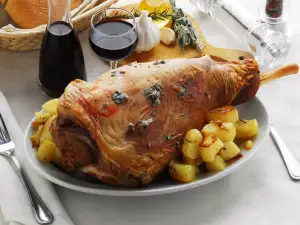
There is a wide variety of foods that can be paired with these types of wine. If you have a red wine, chefs recommend combining it with delicious meats like veal, beef, lamb or pork. The wine would harmonize excellently with veal steak with onion rings and teriyaki sauce, tomatoes stuffed with ground beef, lamb skewers with pomegranate glaze, steaks with butter sauce with mustard and lemons and others.
If you prefer lighter meats, it's a great idea to combine this aristocratic wine with a light dish of bird meat that will also delight the palate. Among our recommendations in this category are: turkey with blueberry sauce and sweet potatoes, turkey rouladens, chicken with almond sauce, duck with sweet-and-sour sauce, as well as duck fillet on the grill. The red variety can also be paired with all kinds of hard and soft cheeses.
As far as the white variety of the wine, it can be combined with fish dishes. Examples include white fish with a fine sauce, skewers of mackerel with bacon, oven roasted hake fillets and more. Seafood delicacies with crabs, lobsters, mussels, calamari, shrimp and others are also preferable. Dishes from Mexican and Asian cuisine are also among those highly appetizing additions to white Hermitage.
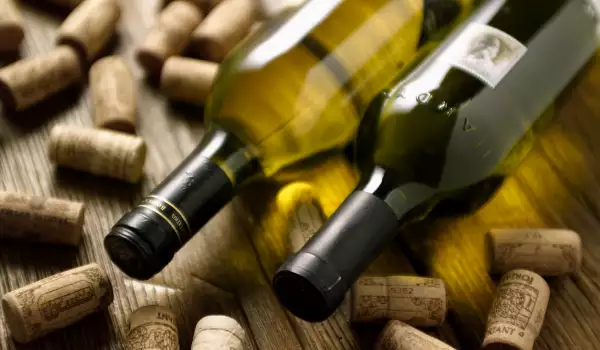
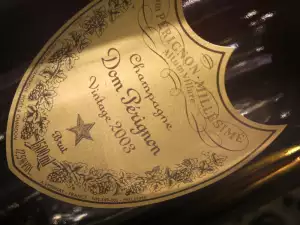
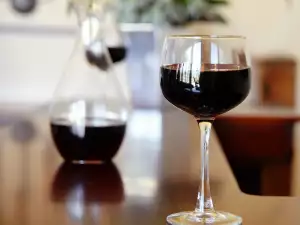


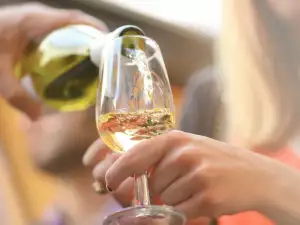
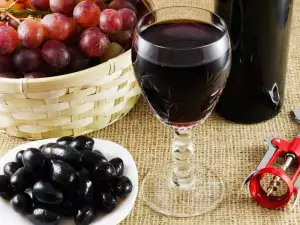

Comments